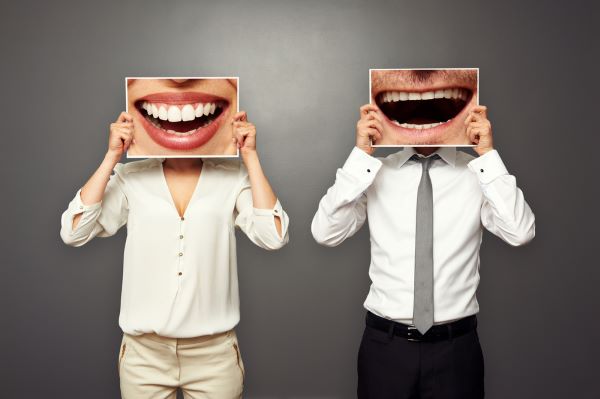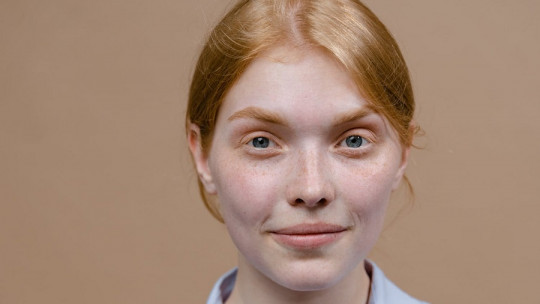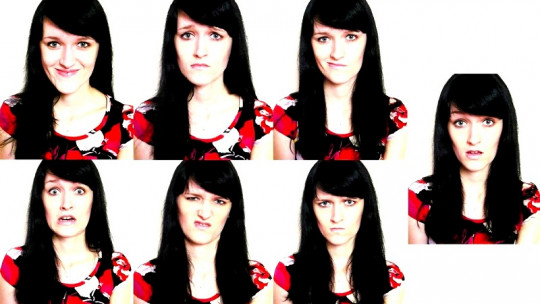What are the basic emotions? Primary emotions are universal, they are reflected in facial expressions and allow us to survive and relate to others.
We all know and have experienced different types of emotions. But human emotions are so complex that they pose a challenge for psychologists to understand and learn from them. Even so, it is possible to establish a classification of emotions to try to understand and master them for our mental well-being. The key to being happy on many occasions lies in understanding our emotional side in order to know and treat ourselves much better.
What are basic emotions?
It is very likely that at some point in your life you have wondered what human emotions are and why we feel them. Basic emotions manifest themselves in emotional states that are marked by the natural development of people and that appear innately, punctually and unconsciously. Basic emotions are universal come from evolution and appear independently of the cultural context, they are common to the entire population.
An emotion is, according to the RAE, an intense and temporary alteration of mood, which can be positive or negative and which is accompanied by a certain somatic shock, that is, a related physical reaction. Thus, taking into account the traditional classification, there are six basic emotions: joy, sadness, anger, fear, disgust and surprise
We’ll see now What are the basic emotions according to different psychology experts? why they are considered basic compared to other emotions and what difference there is between emotions and feelings.
Types of basic emotions
Emotions can be classified as basic or primary and secondary emotions and, as we have said, they can be positive or negative. For an emotion to be primary, it must be recognizable at first sight and must have a universal character identifiable in any culture. Primary emotions, in addition, usually play a role in survival as a response to pleasant or unpleasant stimuli that may be associated with a certain action.
Furthermore, the primary emotion must involve physical consequences, especially on the face and other parts of the body, such as heart rate, blushing, muscle tension, etc. characteristics of primary emotions are:
- They appear suddenly and are short-lived.
- They have a clear reflection in the facial expression.
- They are with us from birth and throughout life.
- They cause involuntary reactions in the body.
- They serve as an adaptive system.
From the primary emotions that fulfill all these traits, an infinite number of secondary emotions that are more complex due to the mixture of one or more of the basic emotions. Some studies have come to distinguish up to 27 subtypes of emotions, both primary emotions and secondary emotions, which oscillate between different emotional states with blurred boundaries and much more complex to observe and identify, such as jealousy, shame, excitement or calm.
The 6 basic emotions
Emotions for many years have been classified into six basic emotions: joy, sadness, anger, fear, disgust and surprise. We owe this list of 6 basic emotions to the American psychologist Paul Ekman, a pioneer in the study of these and their facial expressions. Paul Ekman created the list of emotions in 1972, based on his studies in different cultures not related to each other and how their inhabitants were able to assign certain facial reactions based on certain situations, he concluded that there are some universal emotions common to the human species and determined by evolution.
The author continued his research to expand the spectrum of emotions going so far as to create a facial coding system for actions that sparked numerous criticisms.
In this same sense, the author, father of emotional intelligence, Daniel Goleman, also takes these into account. six emotions in his work and delves into its possible management for greater well-being.
However, the 6 basic emotions have also suffered variations based on other authors, such as the recent 2014 study by the Institute of Neuroscience and Psychology of the University of Glasgow in which it is concluded that the basic emotions are only four : fear, sadness, anger and joy since, by studying the facial muscles, surprise and disgust can be included in fear and anger, respectively.
So, focusing on Paul Ekman’s studies and leaving the two emotions in doubt for last, let’s see what those emotions are like. 6 basic emotions

Joy
The first basic emotion that we highlight is happiness , which can be defined as a pleasant emotion of satisfaction or pleasure and that has a momentary or time-limited duration. Without a doubt, it is one of the most positive basic emotions that all people like to feel. Joy appears in the face of various stimuli such as good news, a goal achieved, a gesture of affection or even a funny anecdote that makes you laugh out loud. This emotion frees happiness hormones such as endorphins, serotonin or dopamine.
Furthermore, this emotion is highly contagious and pushes human beings to do everything necessary to relive it again and again as a reward.
The facial expression that characterizes joy It is the smile, the cheekbones rising and the eyes becoming smaller.
Characteristics of joy
Joy is one of the primary emotions or basic emotions what you most want to achieve. In this way we could say that these emotions in examples are expressed through the following characteristics:
- Facial expression: Smile
- Body language: Relaxed posture
- Tone of voice: Pleasant
Many researches have shown that the happiness and in this way, the happiness that one of these types of emotions entails is intrinsically related to health. In this way, unhappiness or sadness often goes hand in hand with poor health.
The sadness
Another of the basic universal emotions is sadness This is characterized by a depressed emotional state that is expressed with affectation and discouragement and that also has other physical and emotional consequences such as cry apathy or lack of appetite.
In addition, With sadness, mental and cognitive activity decreases , which also involves an adaptation to the situation that has caused that sadness, such as bad news or unfavorable life circumstances. In this sense, feeling sadness can also be useful for greater introspection and evolution as a human being, as well as towards seeking help and positive reinforcement.
Facial expression of emotions such as sadness It is also easily recognizable by the downward drooping of the lips and eyelids as well as the contraction of the eyebrows.
Characteristics of sadness
When the sadness If experienced for prolonged periods, this emotion can cause depression or other health illnesses. Basically sadness is one of the most common human emotions, and is expressed through the following:
- cries
- dampened mood
- Lethargy
- Tranquillity
- Withdrawal from others
The function of sadness It can cause people to use certain coping mechanisms such as avoiding loved ones, self-medicating, or even reflecting on negative thoughts.
The wrath
Anger represents rage and irritability The gonna It is another of the six basic emotions classified on the list and that are shown quickly and unconsciously in response to an event or situation that outrages us and causes anger, according to its definition. It is, perhaps, along with fear, one of the emotional states that most facilitate survival since they predispose us to unpleasant situations with an attitude towards action.
The body response with anger It is the increase in muscle tension, breathing frequency and adrenaline that makes us alert. However, a prolonged state can be harmful to behavior and lead to other harmful emotions and feelings in relationships.
The facial expression that denotes anger It is that of the mouth and teeth clenched and the eyebrows together as well as the eyes relatively open and the gaze fixed on the object or fact that causes this emotion.
Characteristics of anger
Anger is characterized by feelings of hostility, frustration, and antagonism toward others. Thus, the wrath It is one of the types of basic emotions that can play a role as the body’s fight or flight response. When a threat exists and generates feelings of anger, people may be inclined to defend themselves from danger and protect themselves. The main characteristics of anger emotions are the following:
- Facial expression: Frown or glare
- Body language: Firm posture
- Tone of voice: Gruff or shouting
- Physiological response: Sweat
- Aggressive behaviors: Hitting, kicking, throwing objects
Anger can be a problem when it becomes excessive or is expressed in an uncontrolled manner. So much so that one of these primary emotions It can make it difficult to make rational decisions and can even have a negative impact on your health.

The fear
Among the basic emotions, the fear represents an intense psychological emotion that is unpleasant and negative at first but is highly useful as a response to a threat or danger He fear It is common to humans but also to animals and has always been a primary adaptive reaction that has allowed the survival of species. This basic emotion prepares us for defense but also for the avoidance of annoying situations as well as for learning about facts or objects that we do not want to face or from which we want to protect ourselves.
Regarding facial expression or facial features of fear these are clear and stand out for open eyes and raised upper eyelids, raised eyebrows and together and extended lips
Characteristics of fear
Of all the list of emotions , fear is the reaction to the threats that the environment may present. The facial expression of fear and physical emotions is characterized by the following:
- Facial expression: Opening of the eyes and chin back
- Body language: Shrunken posture
- Physiological reactions: Rapid breathing and accelerated heartbeat
People do not feel one of these types of emotions in the same way. In this way, there are individuals who may be more sensitive to these primary emotions , making it more likely that they feel fear in less dangerous situations. When fear is very present in our lives, this can trigger us to suffer from anxiety.
Disgust
He disgust It is no longer considered a basic emotion among some studies, although others categorize it as primary and as an innate but highly subjective ability.
Disgust is shown when faced with foods, objects or situations that cause disgust and has an adaptive function of the body to avoid being poisoned, according to scientific studies. One of the most common physical consequences of disgust is nausea as the body’s reaction to the causing stimuli.
The facial expression that represents disgust is commonly accepted as a raised upper lip and wrinkled nose.
Characteristics of disgust
Disgust is one of the emotions that is expressed on the face with universal gestures. In this way, its main characteristics are the following.
- Body language : move away from the object of disgust.
- Physical reactions: vomiting or retching.
- Facial expressions: wrinkle the nose and shrink the upper lip
People may also feel one of these primary emotions out of moral disgust when others behave in unpleasant, immoral, or evil ways.
The surprise
When faced with an unforeseen event or an unexpected situation, we show a gesture of surprise. Surprise, previously considered one of the six basic emotions but now linked to fear due to its similarity in facial features, is an alteration in the emotional state that can be positive, negative or neutral. And in any of these cases it is accompanied by a broad inspiration and the emission of sounds and raising of the voice in the form of a scream or expressions.
Features of surprise
These types of basic emotions can be positive, negative or neutral. In this way, surprise is often characterized by the following.
- Facial expression: Raise eyebrows, open mouth and eyes.
- Physical response: Jump back
- Verbal reaction: Shout
Surprise is another of the basic emotions in psychology that can be a fight or flight response to danger. When people are scared, they experience a burst of adrenaline that prepares the body to face a threat.
Regarding the facial expression of surprise, the eyes open enormously, the eyebrows curve and rise and the mouth opens in an unconscious and momentary gesture that can be followed by other gestures related to other basic emotions such as joy or joy. fear, depending on the type of surprise.
Difference between emotions and feelings
As we have seen, emotions are reactions of the brain to external (context, environment or other people) or internal stimuli and are reflected in our physical and bodily expression. The difference between emotions and feelings is that emotions are usually specific and usually precede feelings, which last longer over time. Some examples of this could be the emotion of joy over good news that later turns into a feeling of happiness or sadness over a loss that ends up turning into a feeling of sorrow or suffering in such a situation.
In short, basic emotions tend to appear in response to a precise impact and unconsciously and then end up becoming or not a feeling and being able to manage it through emotional intelligence or other self-knowledge and psychology techniques.









